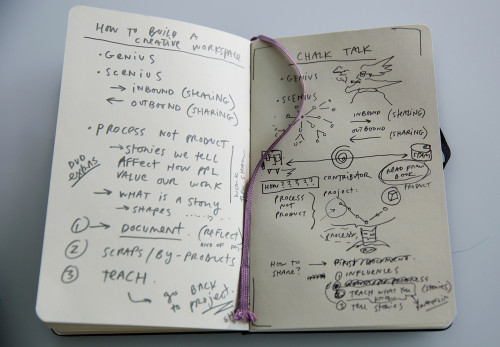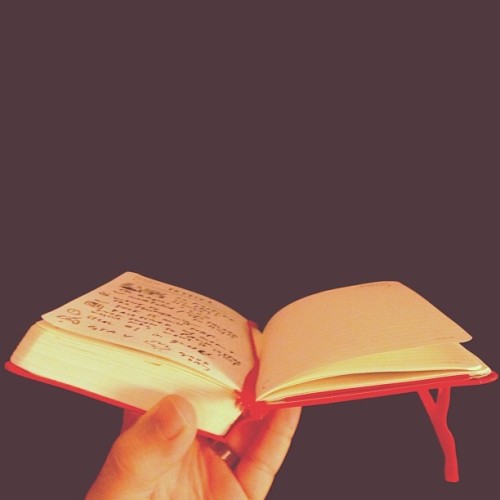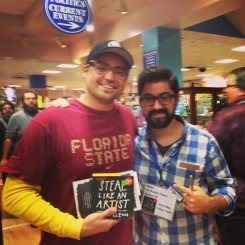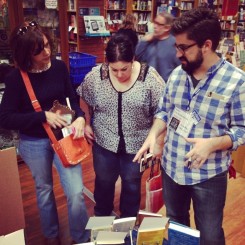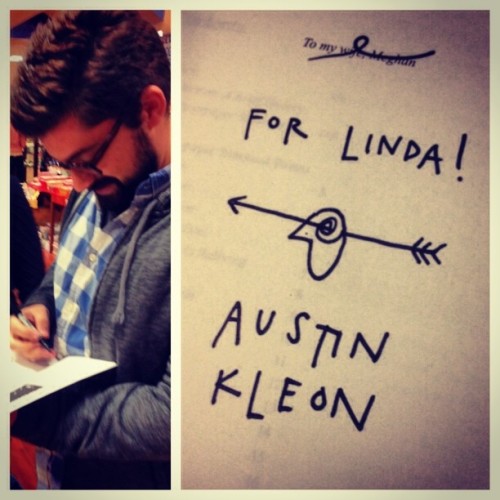When I was in New York a few weeks ago, Fast Company interviewed me about the idea of a daily dispatch. They also got some great shots of my notebook and me making a blackout poem.
Search Results for: blackout poem
How much of the year is left
I realized last night as I finished yesterday’s logbook entry just how little time was left in the year. You can see DEC 1 on the calendar, but your brain doesn’t really register it the way the chunk and heft of the pages turned behind you does.
What to do with the rest of the calendar?
It’s tempting to call it a year and spend the rest of December in retrospection. It’s around this time every year that people start posting their “best of the year” reading lists (myself included) — as if anything you read in December doesn’t really count. This is a mistake, because every time I post a best of the reading year list before December 31st, I read a book or two that should’ve made the list, a book that gets lost in the cracks between my official lists. (Last year it was Will Oldham on Bonnie “Prince” Billy and Ian Svenonius’s Supernatural Strategies for Making A Rock and Roll Band. The year before, it was Jennifer Egan’s A Visit From The Goon Squad and Howard Gossage’s The Book of Gossage.) None of these books is now on my “best of” site, even though they should be.
What else am I missing by being prematurely retrospective? (I can’t remember which artist said it—maybe Hockney?—but having a “retrospective” makes it sound like you already died.)
There’s a section in Show Your Work! called “Don’t Quit Your Show” where I tell this little anecdote:
One time my coworker John Croslin and I came back from our lunch break and our building’s parking lot was completely full. We circled the sweltering lot with a few other cars for what seemed like ages, and just when we were about to give up, a spot opened and John pulled right in. As he shut off the car he said, “You gotta play till the ninth inning, man.”
Play ’til the ninth inning. That’s exactly what I was looking for. The year is a baseball game with twelve innings and I want to play until the last out.
So this year I’m pledging to not make my year-end list before the year’s end. I’ll be posting mine on January 1st, 2014. I’m also planning not to let up just because it’s December. I’ll still be checking all my boxes: meditating, making a blackout poem, writing, and reading every day. Because we might only have 30 days left, but a lot can happen in 30 days.
What will you do with yours?
Subscribe to my weekly newsletter for new art and writing delivered right to your inbox.
Also: If you’re looking for a New Year’s resolution, I suggest buying a daily diary (here’s the one I use) and keeping a logbook.
Selling books
I had a blast today selling books at Bookpeople as part of the nationwide Indies First celebration. (I’ve written before about my indie bookstore awakening.) For the record, I was pushing Tim Kreider’s We Learn Nothing, Patrick DeWitt’s The Sisters Brothers, and Oliver Burkeman’s The Antidote. I also bought a book myself: that’s Doug Dorst above, signing my copy of the amazing S.
Best of all, I got to sign books for some really cool readers! Thanks y’all for coming out.
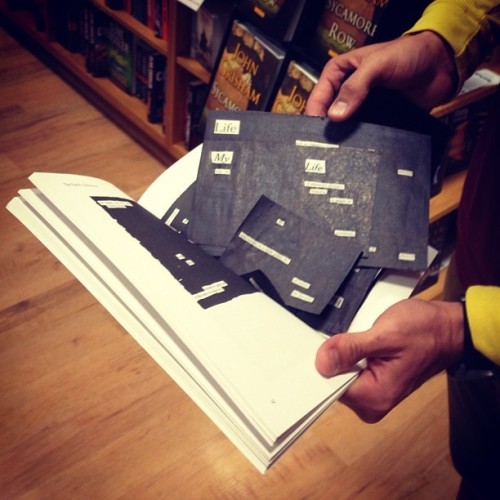
Oh, and dig this: Oscar Ocuto showed up to get Newspaper Blackout signed and what was in his book but a bunch of fresh-made blackout poems! Too cool.
If you’re looking for a cheap stocking stuffer this holiday, BookPeople has tons of SIGNED copies of Steal Like An Artist available. They ship everywhere! Get one here.
Interview with Joel Bush
I talked with Joel Bush for over an hour on his show Capital. (Mostly about the way I operate online and the origins of the newspaper blackout poems.) You can listen above or download the MP3.
Show Your Work! My Creative Mornings Talk
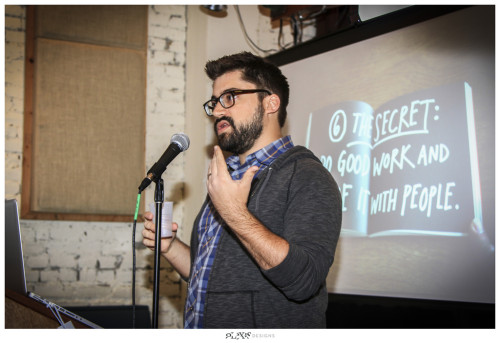
It was my pleasure to give the inaugural talk at the first Creative Mornings here in Austin last month. The monthly theme was “The Future,” so I tried to make the talk a sort of rallying cry to encourage future presenters and attendees to open up and share the process of their creative work, not just the products of that process. (That happens to also be the subject of my next book.)
If you don’t want to watch the video, I’ve pasted my notes and a few slides from the talk below. Enjoy.
* * *

It’s weird to try to give a talk about the future, because most of the time, talks like this are actually about THE PAST. A speaker is asked to get up on stage and talk because they’re someone who’s accomplished something, so they must have something to say, some sort of wisdom or experience or advice to impart to the audience.
But I happen to think that most advice is autobiographical — a lot of the time when people give you advice, they’re really just talking to themselves in the past.
Now, we usually think that the past is behind us, and the future is in front of us. This seems totally natural, right? But years ago I read about this tribe of indigenous people in South America called the Aymara, and they have this very different way of talking about the past and the future.
When they talk about the past, they point to the space in front of them. When they talk about the future, they point behind them. Strange, right?

Well, the reason they point ahead of them when talking about the past is because the past is known to them — the past has happened, therefore it’s in front of them, where they can see it.
The future, on the other hand, is unknown, it hasn’t happened yet, so it’s behind them, where they can’t see it.
This kind of blew my mind when I read about it. The past is right in front of us, but the future is behind us.
The future is hard to talk about because it hasn’t happened yet — it’s behind us, where we can’t see it.
- ← Newer posts
- 1
- …
- 33
- 34
- 35
- 36
- 37
- …
- 66
- Older posts→

